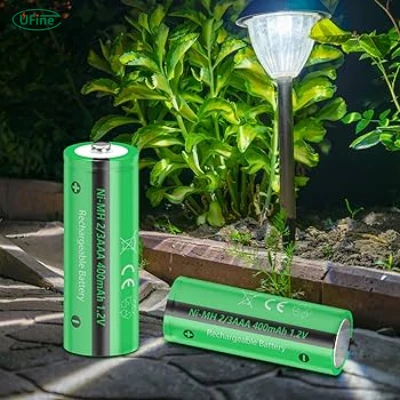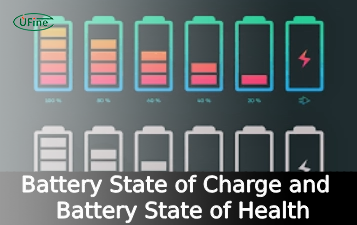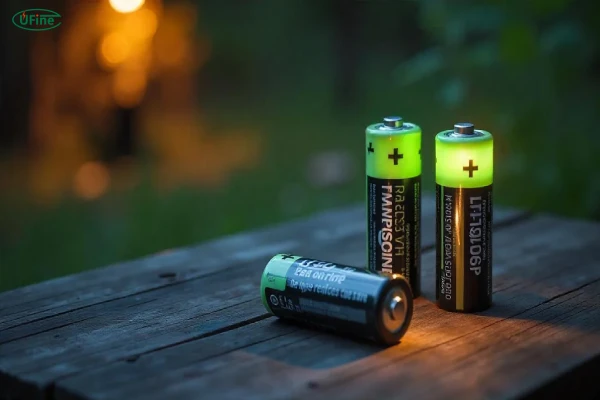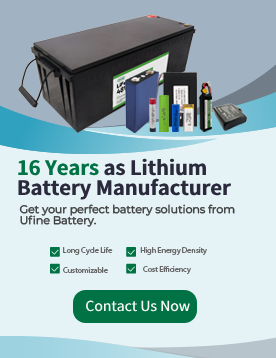
- Part 1. How solar lights use rechargeable batteries
- Part 2. Types of rechargeable batteries used in solar lights
- Part 3. Why AA rechargeable batteries are popular for solar lights
- Part 4. Choosing the right AA Rechargeable batteries for solar lights
- Part 5. Specifications of high-quality AA rechargeable batteries
- Part 6. How to replace and install rechargeable solar batteries
- Part 7. How to extend the life of rechargeable batteries in solar lights
- Part 8. Common problems with rechargeable solar batteries
- Part 9. What batteries can replace AA batteries for solar lights?
- Part 10. Top brand AA rechargeable batteries for solar lights
- Part 11. FAQs
Part 1. How solar lights use rechargeable batteries

Solar lights are equipped with a small photovoltaic (PV) panel that converts sunlight into electricity. During the day, the panel sends this power to a rechargeable battery, where it’s stored until it’s needed at night.
The key functions of the battery in solar lights include:
- Energy Storage: Holding solar energy for later use.
- Voltage Regulation: Ensuring the LED light receives the correct operating voltage.
- Power Supply at Night: Delivering stored energy steadily over several hours.
Some solar lights have integrated batteries built into the unit, while others use replaceable AA rechargeable batteries that can be swapped out when performance drops.
Part 2. Types of rechargeable batteries used in solar lights
Not all solar lights use the same type of battery. The three most common types include:
NiMH (Nickel-Metal Hydride)
- Voltage: 1.2V
- Capacity: 600–2800mAh
- Pros: Higher capacity than NiCd, more environmentally friendly, widely available.
- Cons: Slightly more expensive, can self-discharge faster than Li-ion.
NiCd (Nickel-Cadmium)
- Voltage: 1.2V
- Capacity: 600–1000mAh
- Pros: Performs well in extreme temperatures, durable.
- Cons: Memory effect, contains toxic cadmium, lower capacity.
Li-ion / LiFePO₄
- Voltage: 3.2V or 3.7V (depending on chemistry)
- Capacity: 500–1500mAh (small cells)
- Pros: Lightweight, high energy density, long cycle life (LiFePO₄ especially).
- Cons: Requires a specific charging circuit, not always a drop-in replacement for AA cells.
Best Rechargeable Batteries for Solar Lights: Lithium vs NiMH vs NiCd Compared
Part 3. Why AA rechargeable batteries are popular for solar lights
AA rechargeable batteries are favored for several reasons:
- Standard Size: Fits most solar light designs without modification.
- Good Balance of Cost and Performance: Affordable yet capable of powering lights all night.
- Ease of Replacement: No special tools needed — just pop the old battery out and insert the new one.
- Wide Availability: Sold in hardware stores, supermarkets, and online.
For most solar light owners, AA NiMH rechargeable batteries are the sweet spot between cost, capacity, and lifespan.
Part 4. Choosing the right AA Rechargeable batteries for solar lights
When selecting batteries, consider the following:
- Voltage: Most solar lights are designed for 1.2V rechargeable AA batteries. Avoid using non-rechargeable alkaline AA batteries — they can leak or damage the charging circuit.
- Capacity (mAh): Higher mAh means longer runtime, but if capacity is too high, the small solar panel might not fully charge the battery in one day. For most garden lights, 600–2000mAh is optimal.
- Chemistry: NiMH is the most common, but check your light’s manual to see if NiCd or Li-ion is required.
- Cycle Life: Look for batteries rated for 500–1000 recharge cycles for longer lifespan.
- Brand Reputation: Cheap no-name batteries often fail quickly or deliver lower capacity than advertised.
Part 5. Specifications of high-quality AA rechargeable batteries
A premium AA rechargeable battery for solar lights typically has:
- Nominal Voltage: 1.2V (NiMH/NiCd) or 3.2–3.7V (LiFePO₄/Li-ion).
- Capacity Range: 1000–2000mAh (NiMH) or 600–1000mAh (NiCd).
- Operating Temperature Range: -20°C to +50°C for year-round performance.
- Low Self-Discharge: Retains charge when not in use.
- Cycle Life: Minimum 500 full charge/discharge cycles.
- High-Drain Capability: Suitable for powering LEDs without voltage drops.
Part 6. How to replace and install rechargeable solar batteries
Replacing your solar light batteries is straightforward:
- Turn Off the Solar Light — If it has an on/off switch.
- Locate the Battery Compartment — Usually under the light head or inside the fixture.
- Remove Old Batteries — Dispose of them properly through a battery recycling program.
- Insert New Batteries — Match the polarity (+/-) correctly.
- Test the Light — Turn it on and check if it works after a full day’s charge.
Part 7. How to extend the life of rechargeable batteries in solar lights
- Keep Solar Panels Clean: Dust and debris reduce charging efficiency.
- Avoid Complete Drainage: Replace batteries before they’re completely dead.
- Store Lights Indoors in Winter: Freezing temperatures can damage batteries.
- Use Compatible Batteries Only: Mismatched chemistries can cause charging issues.
Part 8. Common problems with rechargeable solar batteries
- Battery Not Charging: Dirty solar panel, faulty battery, or broken circuit.
- Short Runtime: Battery capacity degraded — replace with new cells.
- Corrosion in Battery Compartment: Clean with vinegar solution and replace damaged batteries.
Part 9. What batteries can replace AA batteries for solar lights?
If your solar light uses AA batteries but you want alternatives:
- AAA Rechargeable Batteries: Only if your light is designed for AAA cells — otherwise they won’t fit.
- 14500 Li-ion Batteries: Same size as AA but 3.7V — only use if your solar light supports higher voltage.
- C or D Size Batteries: Larger capacity, but require a fixture designed for them.
- Integrated Lithium Packs: Some solar lights allow upgrading to built-in lithium battery packs.
Always check your light’s voltage and charging compatibility before switching battery types.
Part 10. Top brand AA rechargeable batteries for solar lights
While there are many brands, some consistently deliver reliable performance:
- Panasonic Eneloop: Low self-discharge, long cycle life, proven reliability.
- Amazon Basics High-Capacity NiMH: Affordable and widely available.
- Duracell Rechargeable NiMH: Trusted brand with good performance in outdoor use.
- Energizer Rechargeable: Long-lasting and easy to find.
- Tenergy Solar NiCd/NiMH: Designed specifically for solar lighting applications.
Part 11. FAQs
Can I use regular AA batteries in solar lights?
No — alkaline AA batteries are not rechargeable and can leak or get damaged when charged.
How long do rechargeable solar batteries last?
Usually 1–3 years, depending on quality and usage conditions.
Can I mix different battery types?
No — mixing chemistries or capacities can lead to charging problems and uneven performance.
Should I remove batteries in winter?
Yes, if you live in freezing climates, store the lights and batteries indoors to prolong lifespan.
How often should I replace them?
Replace when runtime shortens significantly, typically after 500–1000 cycles.
Related Tags:
More Articles

Battery State of Charge and Battery State of Health
Battery SoC vs. SoH explained: Learn professional methods to measure charge levels, test health status, and optimize battery performance for longer lifespan.
Difference Between 18650, 26650, and 21700 Batteries
What’s the difference between 18650, 21700, and 26650 batteries? Compare size, capacity, and performance to find the best lithium battery for your device.
LFP Battery Vs. LTO Battery: A Detailed Comparison
Compare LFP (LiFePO4) and LTO (Lithium Titanate) batteries by energy density, lifespan, safety, cost, and uses in EVs, solar storage, and backup power.
Compare 18650 battery types: Li-ion, LiFePO4, and LiPo. Key specs (voltage/capacity) and best uses for vapes, flashlights, EV batteries.
How to Distinguish Between Grade A, Grade B, and Grade C LiFePO4 cells?
Explore the differences between Grade A, B, and C LiFePO4 cells and learn how to choose the right one for electric vehicles, solar storage, or backup power.



